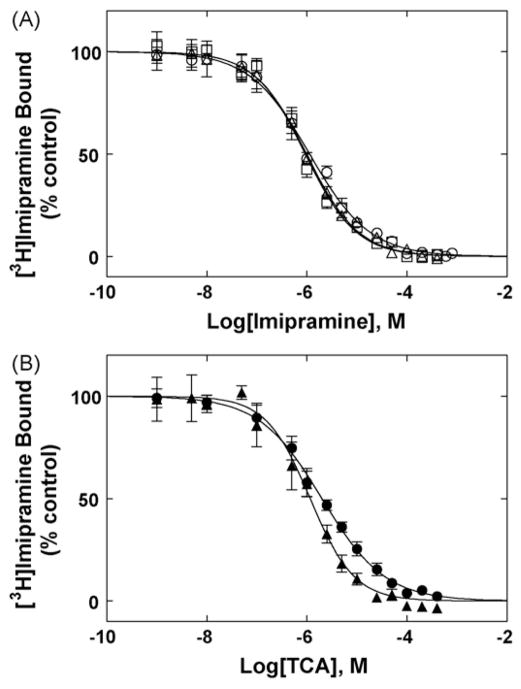Fig. 4.
TCA-induced inhibition of [3H]imipramine binding to hα4β2 AChRs in different conformational states. (A) Imipramine-induced inhibition of [3H]imipramine binding to hα4β2 AChRs in the absence (no ligand) (○) or in the presence of 0.1 μM k-BTx (resting state) (□), or in the presence of 1 μM (−)-cytisine (desensitized state) (△), respectively. (B) Inhibition of [3H]imipramine binding to hα4β2 AChRs in the absence of ligands [no k-BTx and no (−)-cytisine] elicited by amitriptyline (▲) and doxepin (●). hα4β2 AChR membranes (1.0 mg/mL) were equilibrated (2 h) with 15 nM [3H]imipramine and increasing concentrations of the TCA under study. Nonspecific binding was determined at 100 μM imipramine. Each plot is the combination of two to three separated experiments each one performed in triplicate. From these plots the IC50 and nH values were obtained by non-linear least-squares fit according to Eq. (2). Subsequently, the Ki values were calculated using Eq. (3) and summarized in Table 2.

